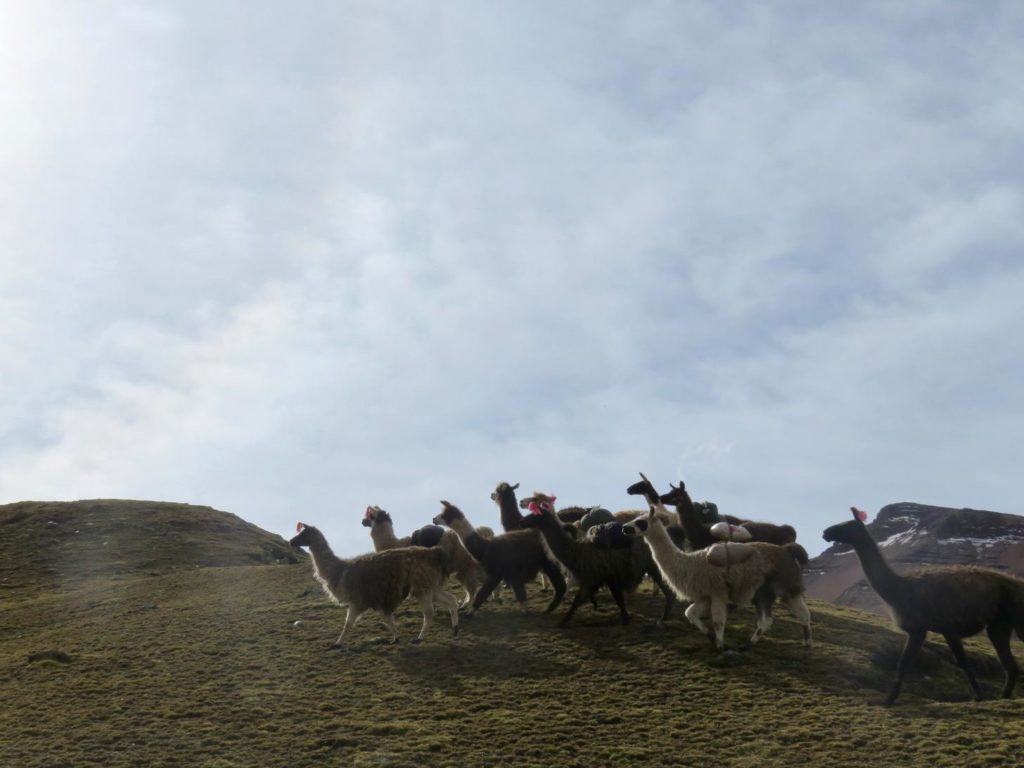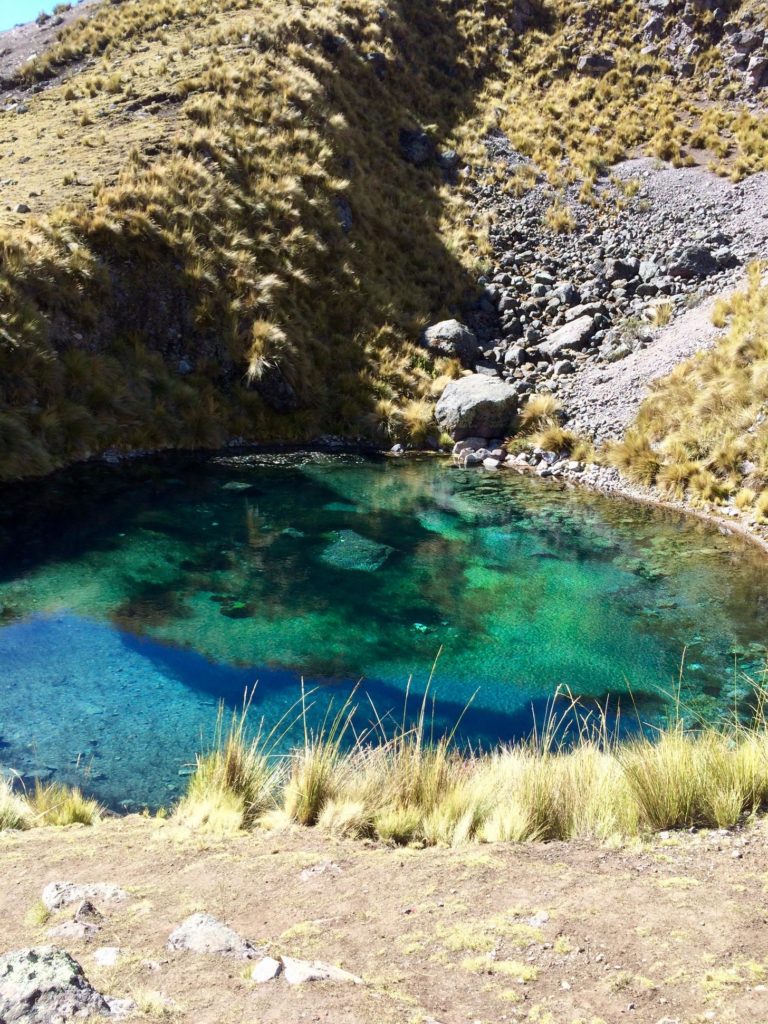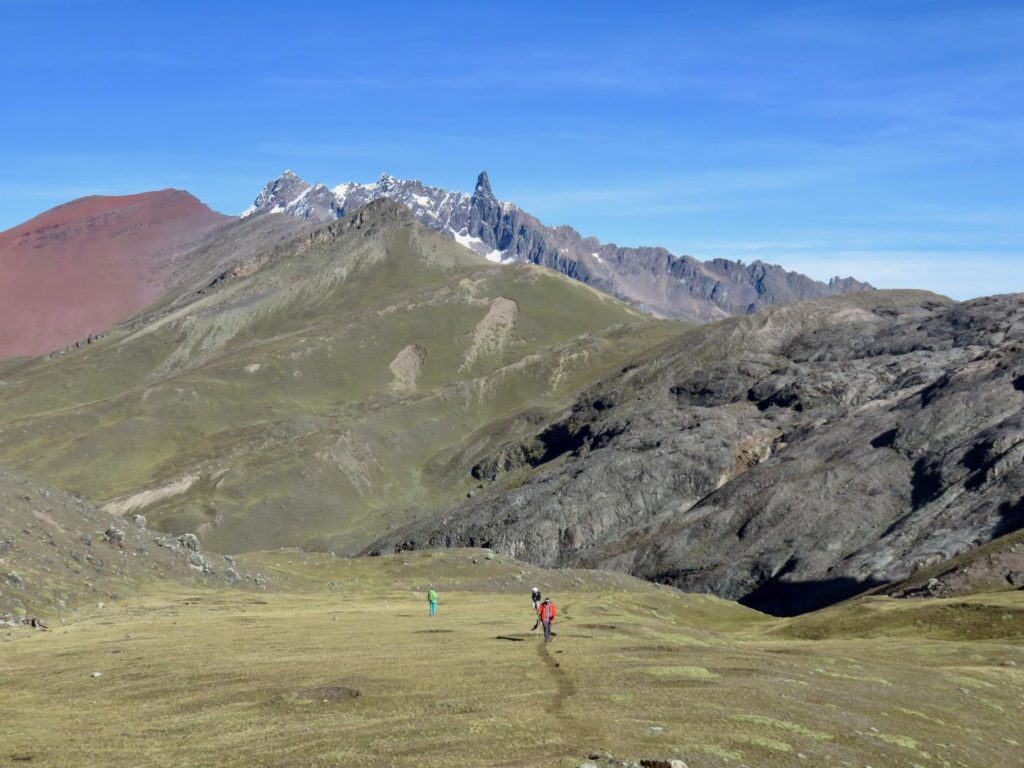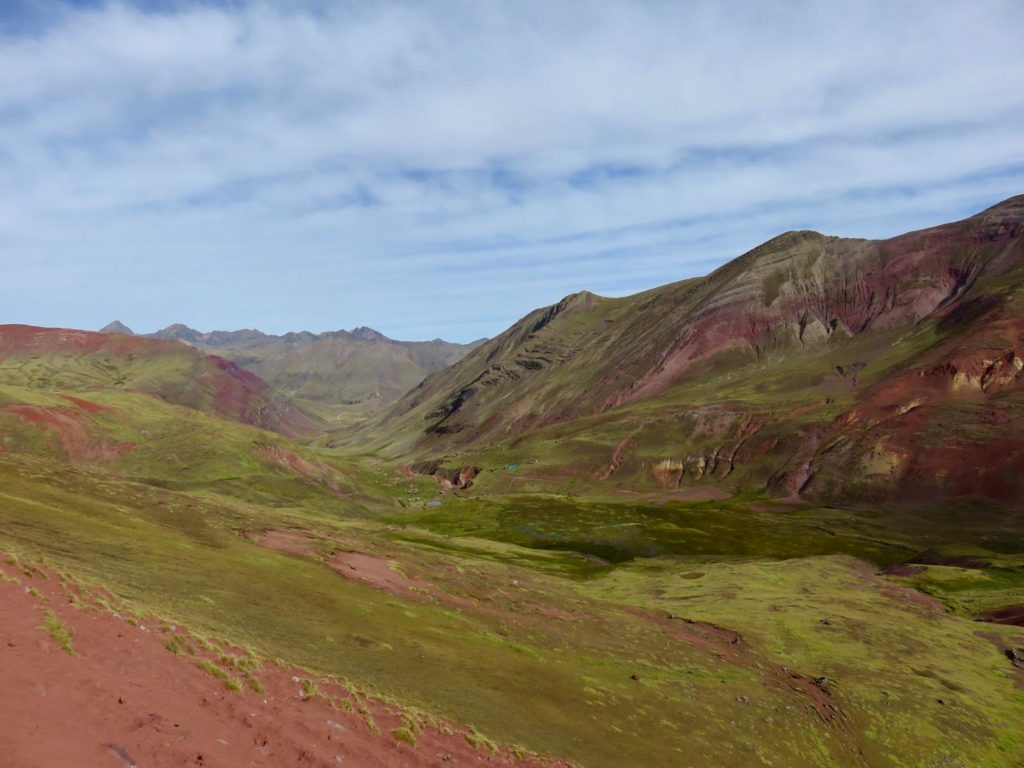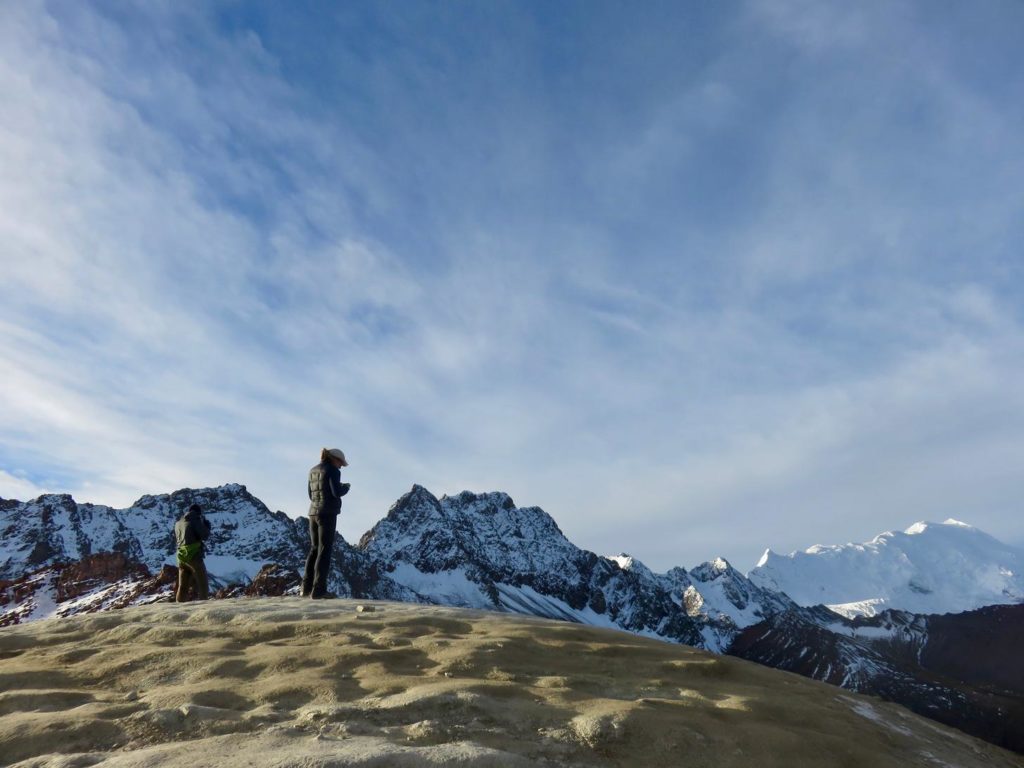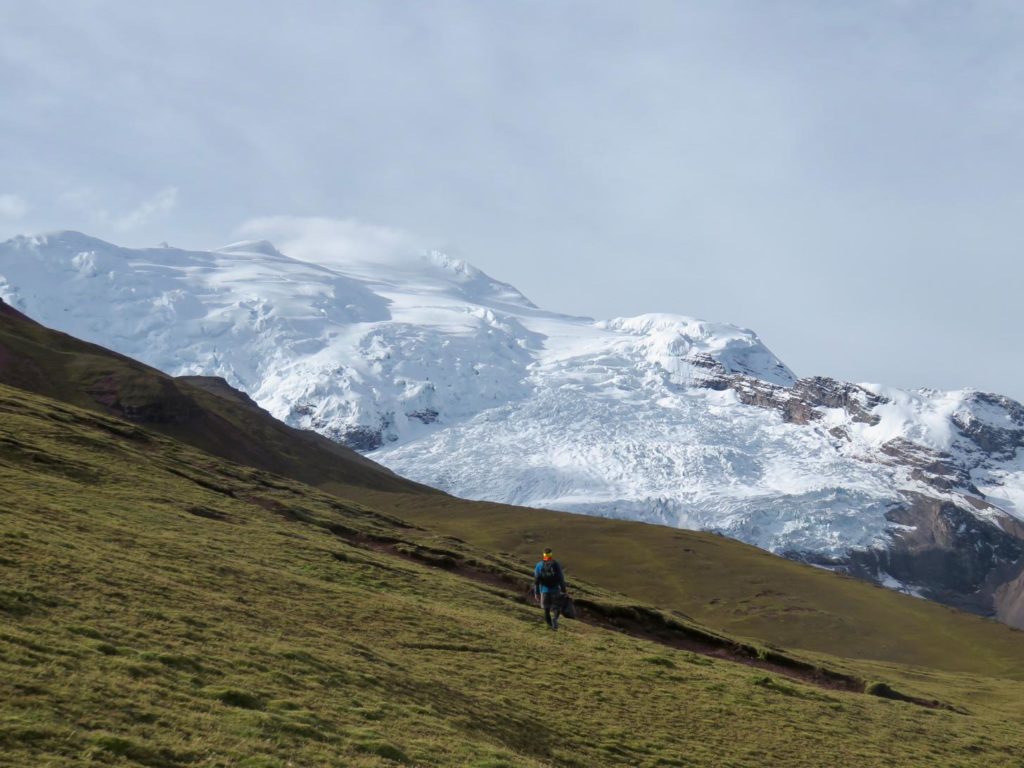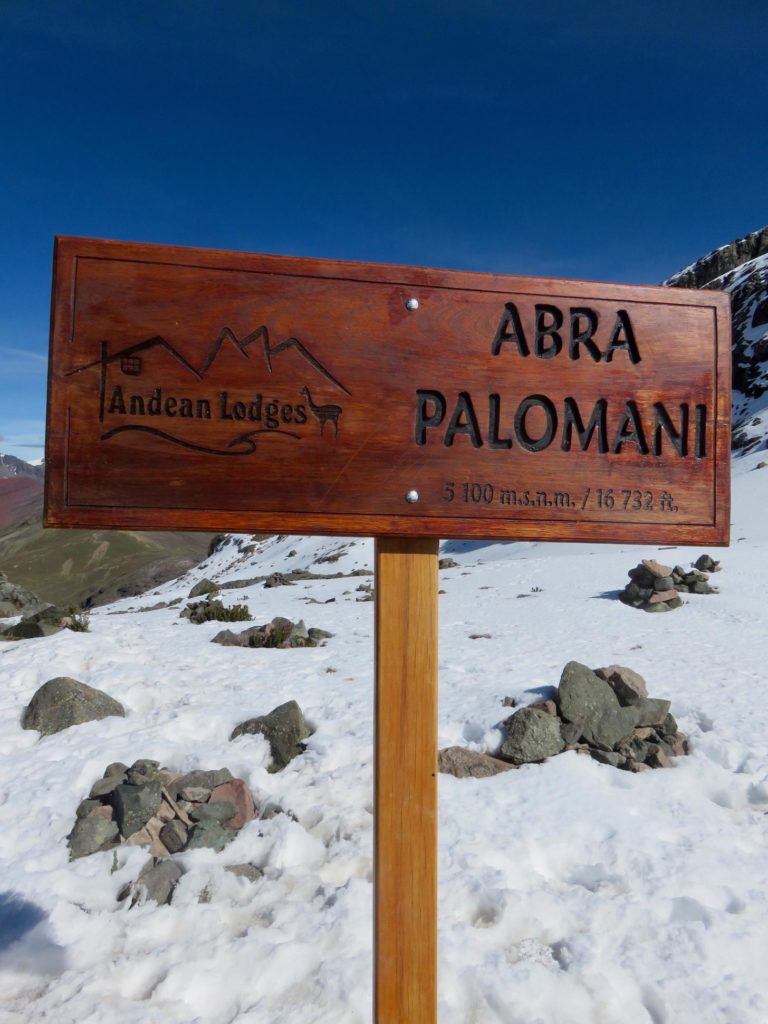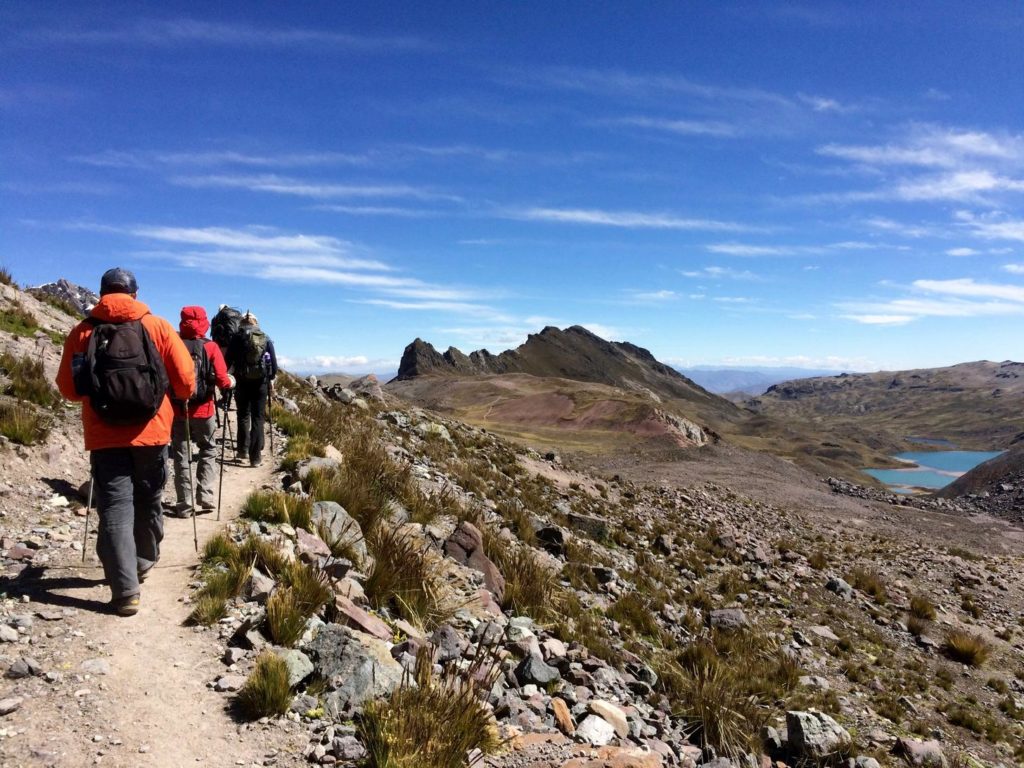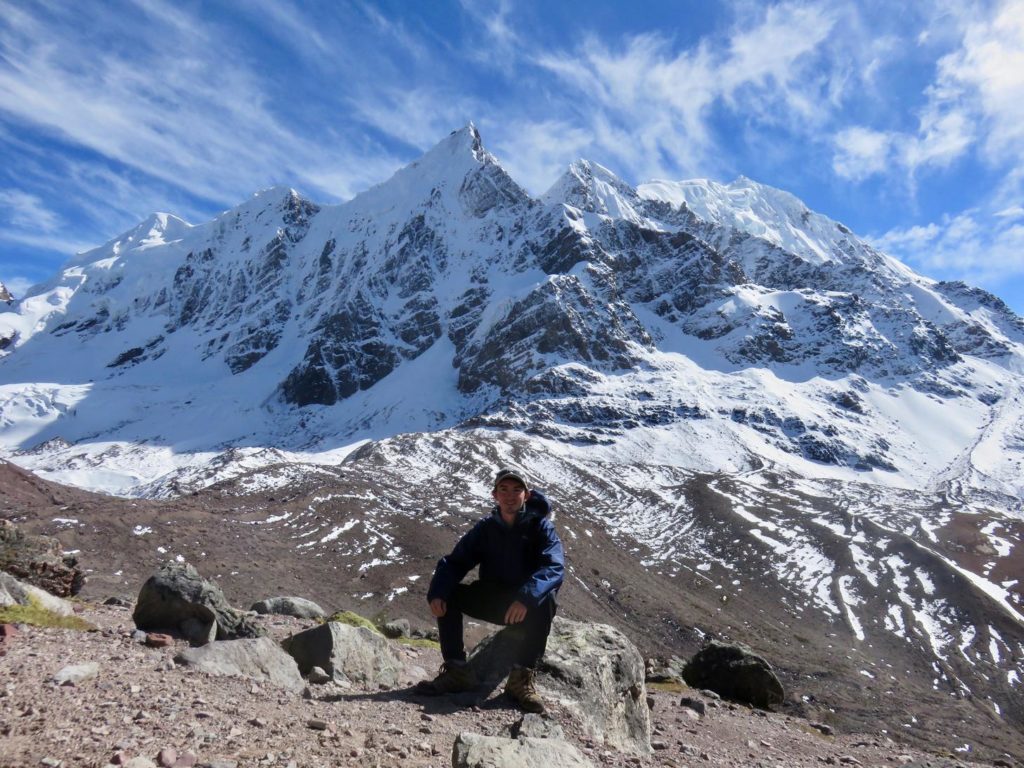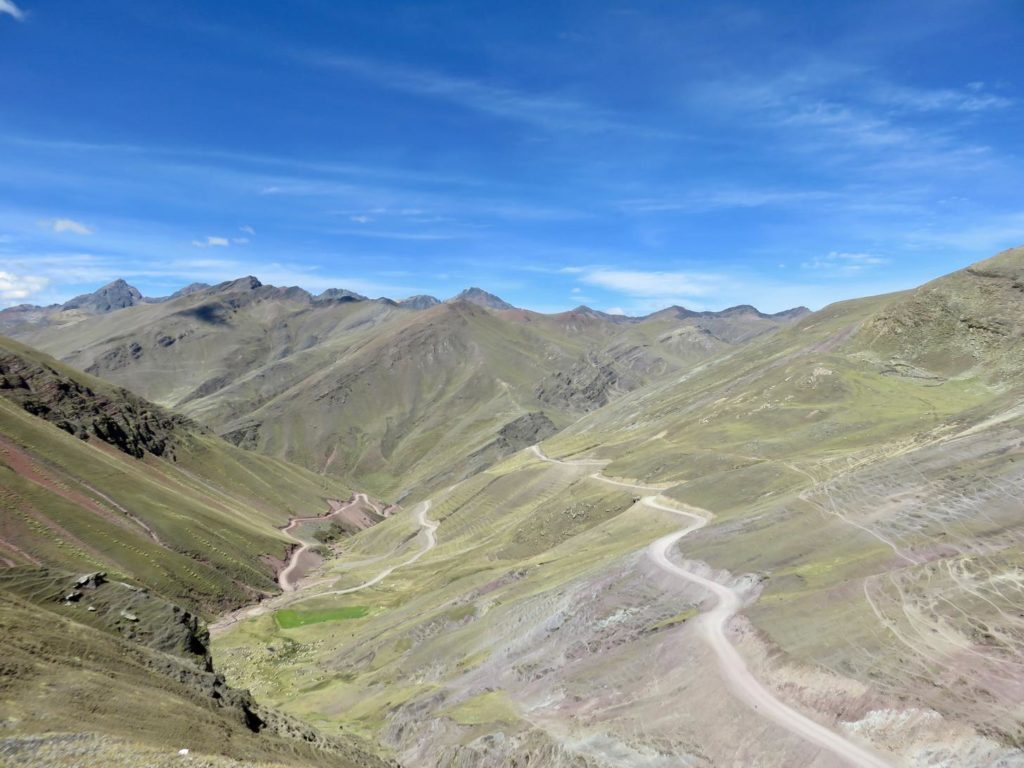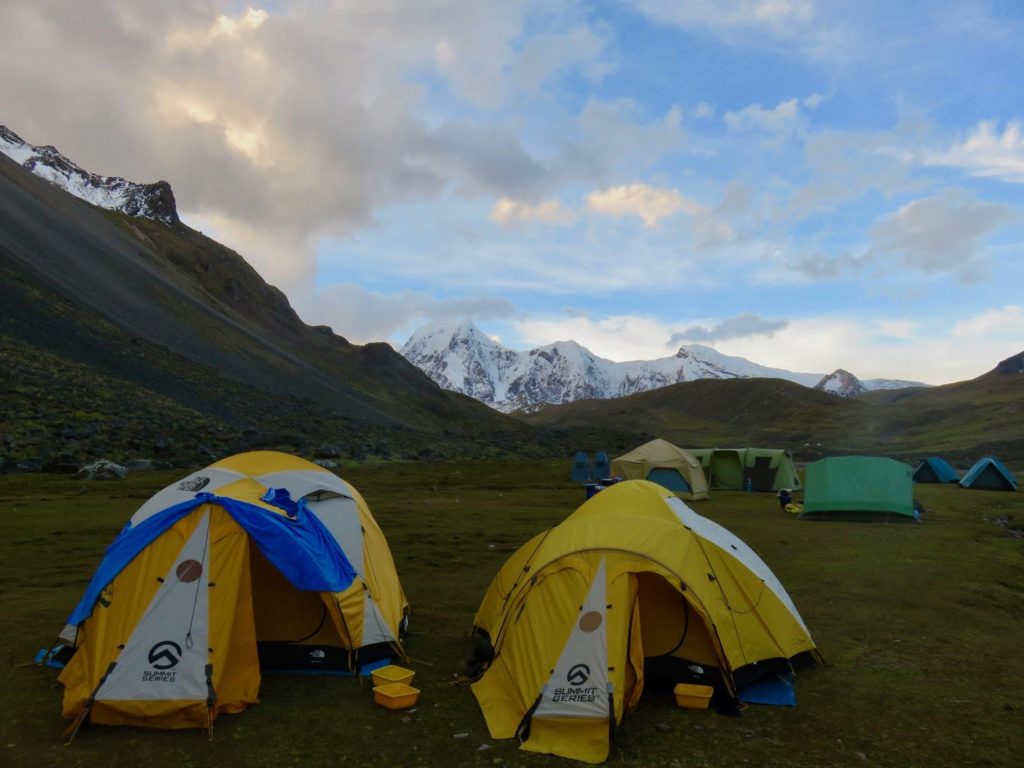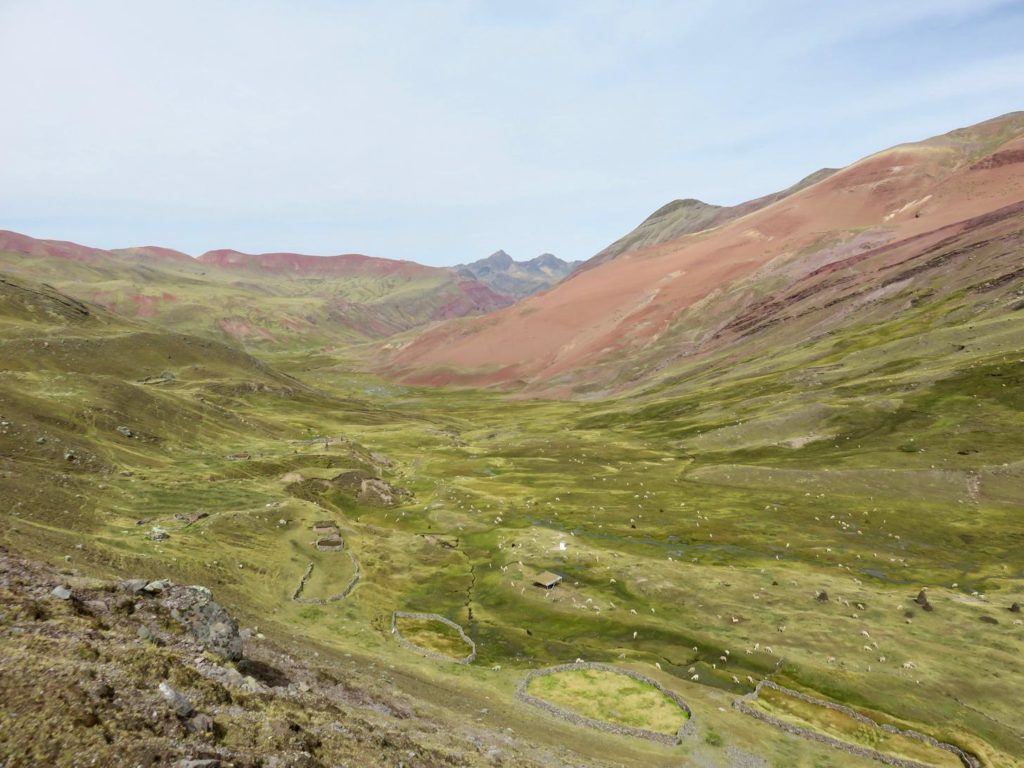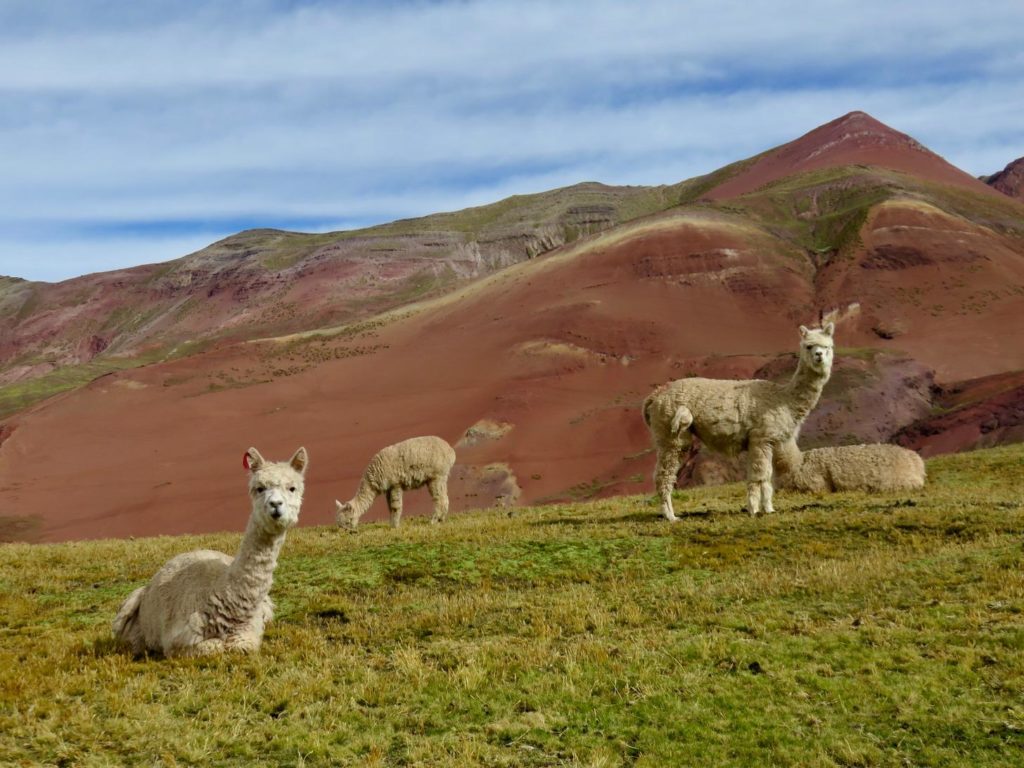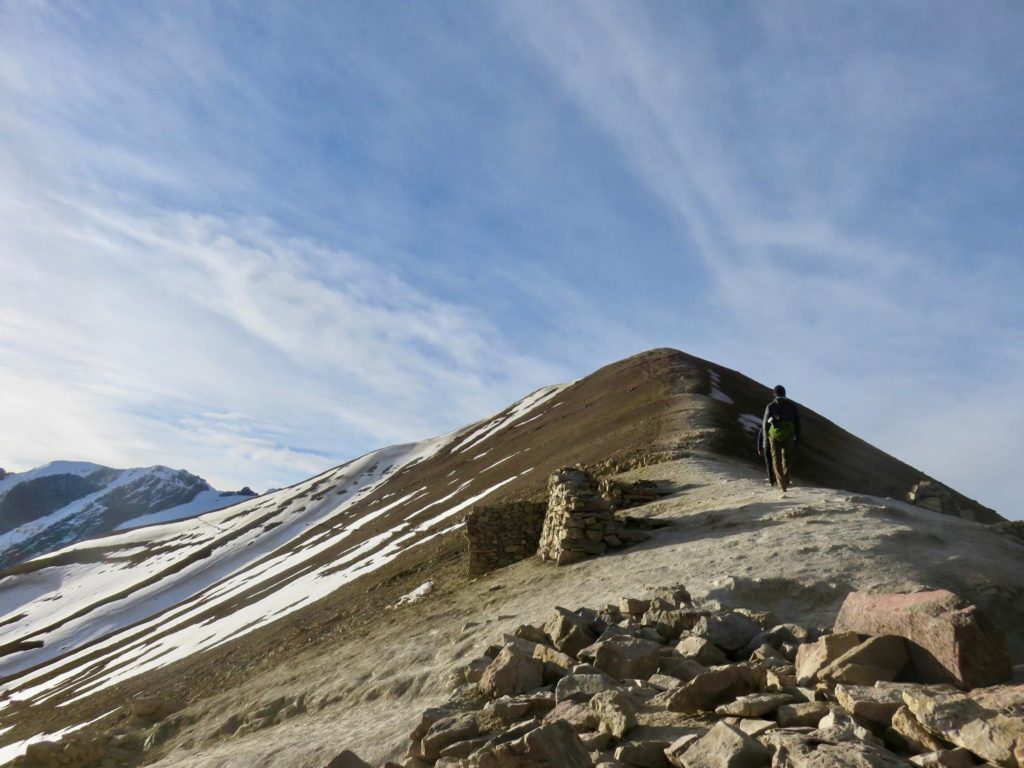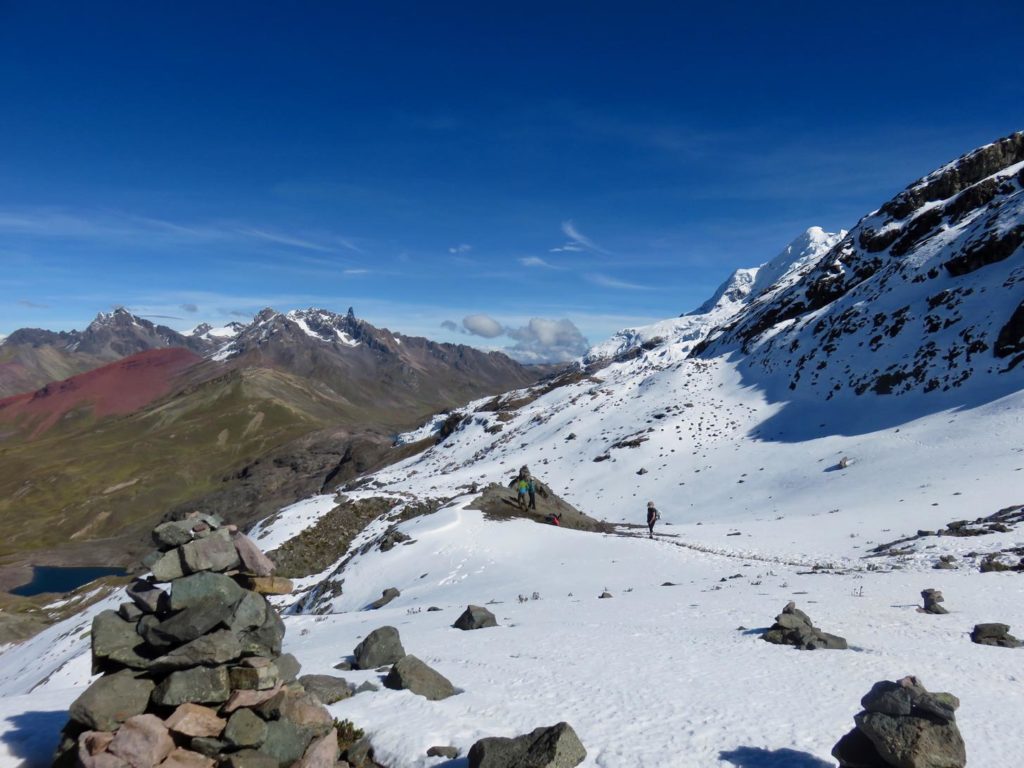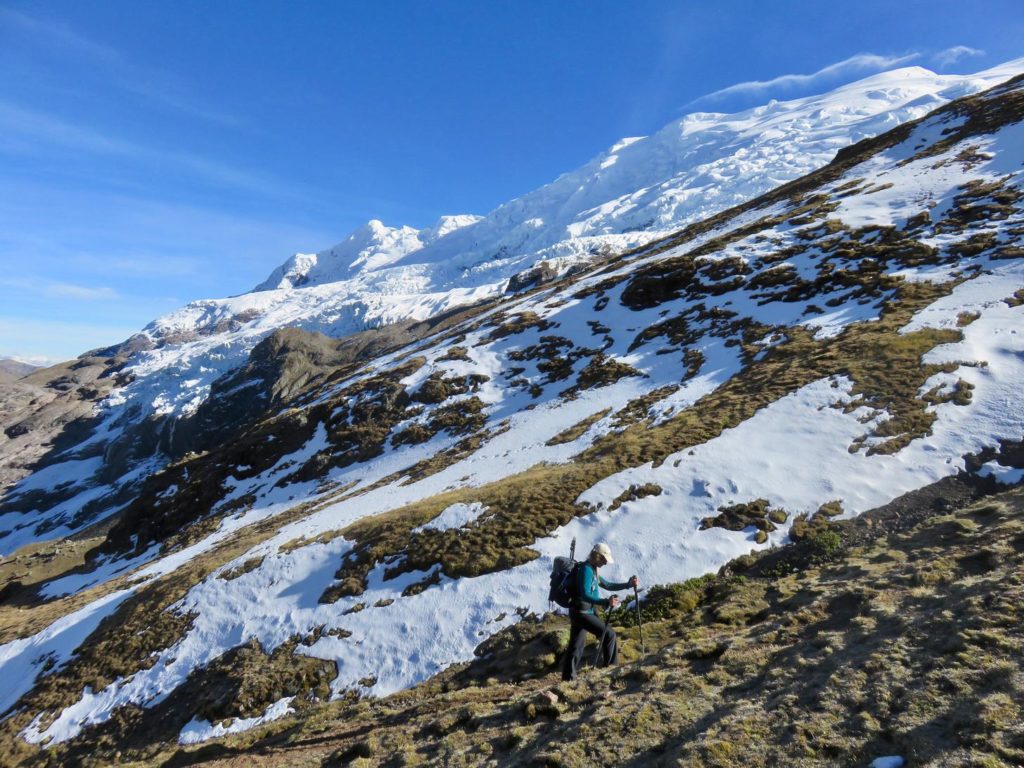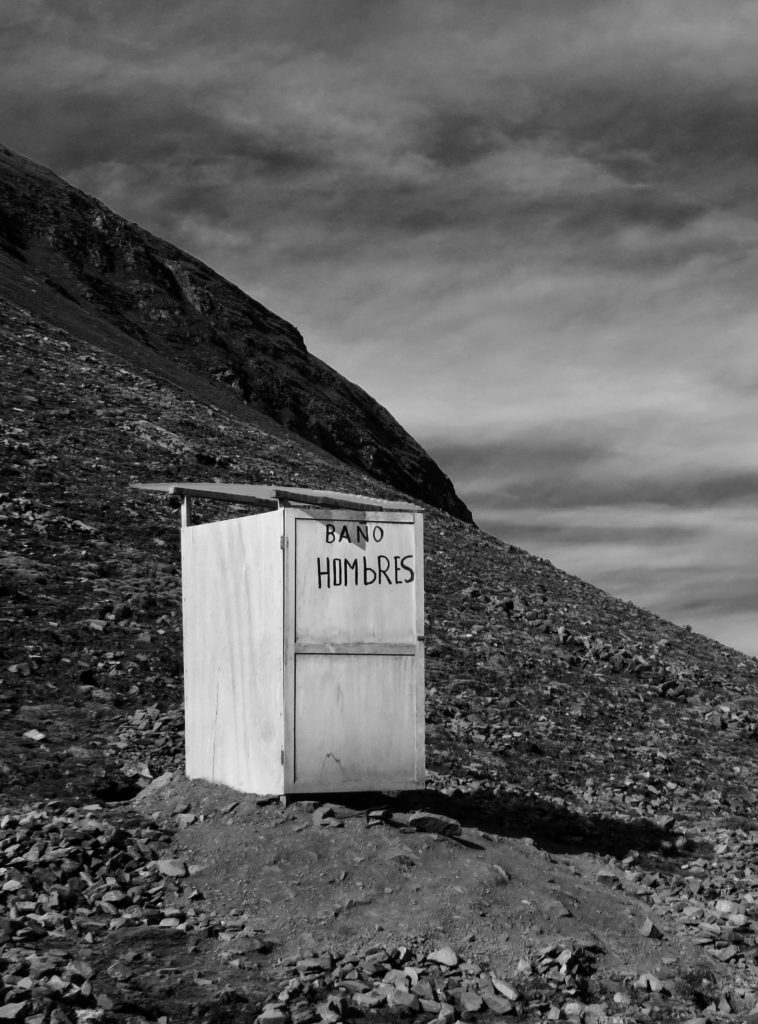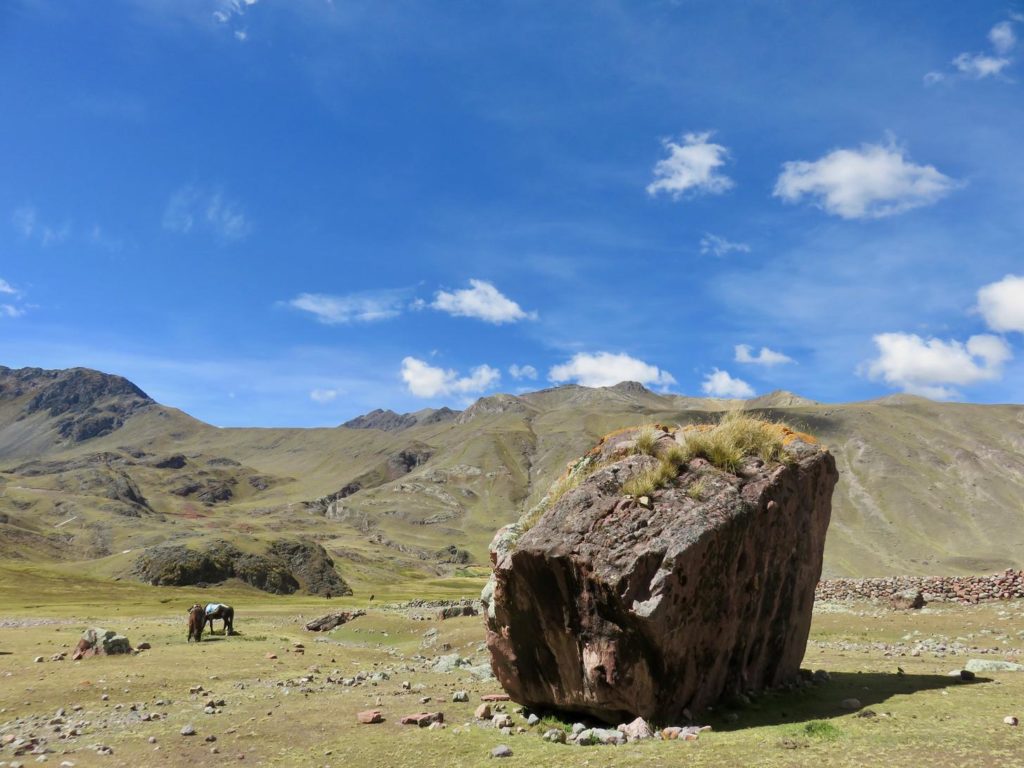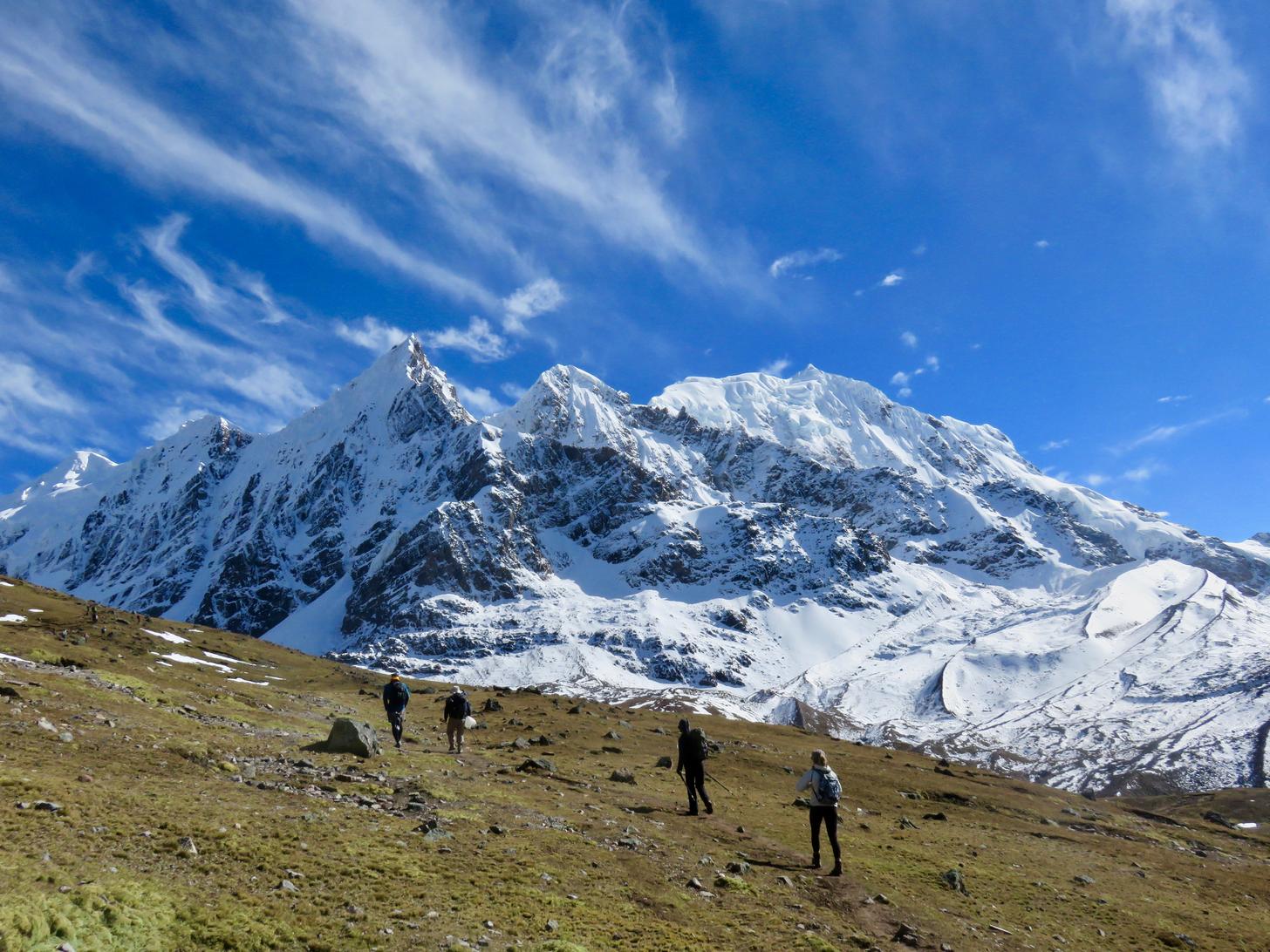
The highlight of my trip to Peru was the five day Ausangate trek. I signed up for the hike with a local trekking company called Apus Peru, joining a multinational group of seven, our guide Herbert and a team of muleteers. Over the course of the hike, we would trek deep into the Andes, circumventing the sacred Mount Ausangate — a 20,945 foot behemoth of glaciers and jagged peaks. It was an unforgettable adventure from start to finish.
Day 1: The Rainbow Mountain
After a three hour drive on twisting mountain roads, we arrived at the starting point of our trek: the entrance to the Vinicunca, the Rainbow Mountain. In recent years, Vinicunca has become a popular destination for tourists. Herbert noted that more busses came up to the mountain every day. And sure enough, just about every travel company in Cusco now has pictures of the striking mountain on display. While most groups do the peak as a day trip, we were fortunate enough to be camping at its base.
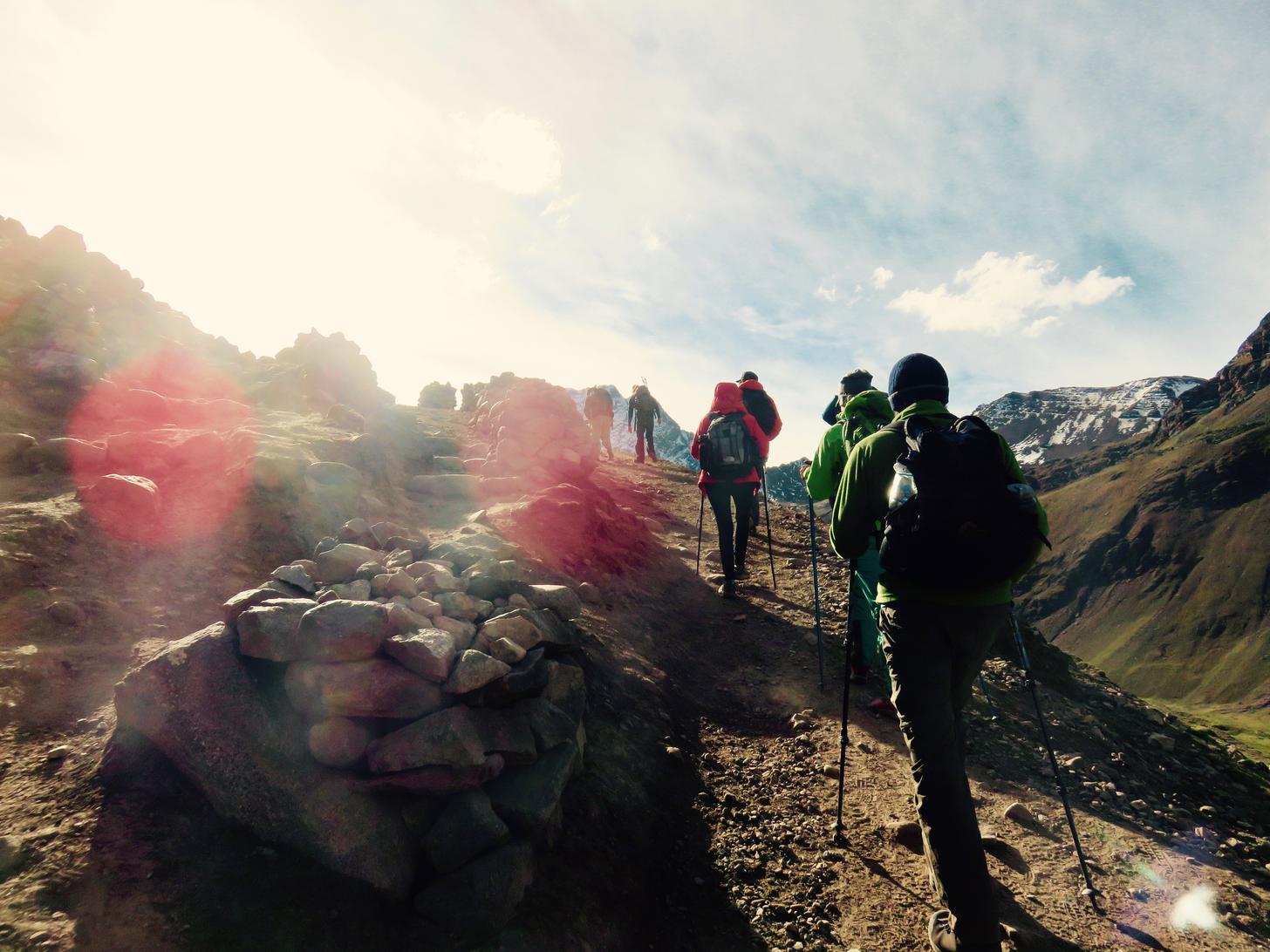
Even with its rising popularity, Vinicunca is not for the faint-hearted. The beginning of the hike starts above 14,000 feet. As someone who grew up hiking 14ers in Colorado this was mind-boggling to me. For reference, Mt. Whitney — the highest peak in the continental U.S. — stands at 14,505 feet. Given my huffing and puffing at that altitude, I wasn’t sure how I would react to the higher elevations of the Andes.
Following a short hike to our camp, we decided to go up Vinicunca that same evening instead of the following morning. This would be one of the best decisions of the trip. I’ve seen plenty of mountains in my life, but the aptly-named Rainbow Mountain is truly in a class of its own. Mineral bands give the mountain its famed multi-colored look, and at the sunset the colors were accentuated further. The hordes of tourists had cleared for the day, so we had the mountain to ourselves.
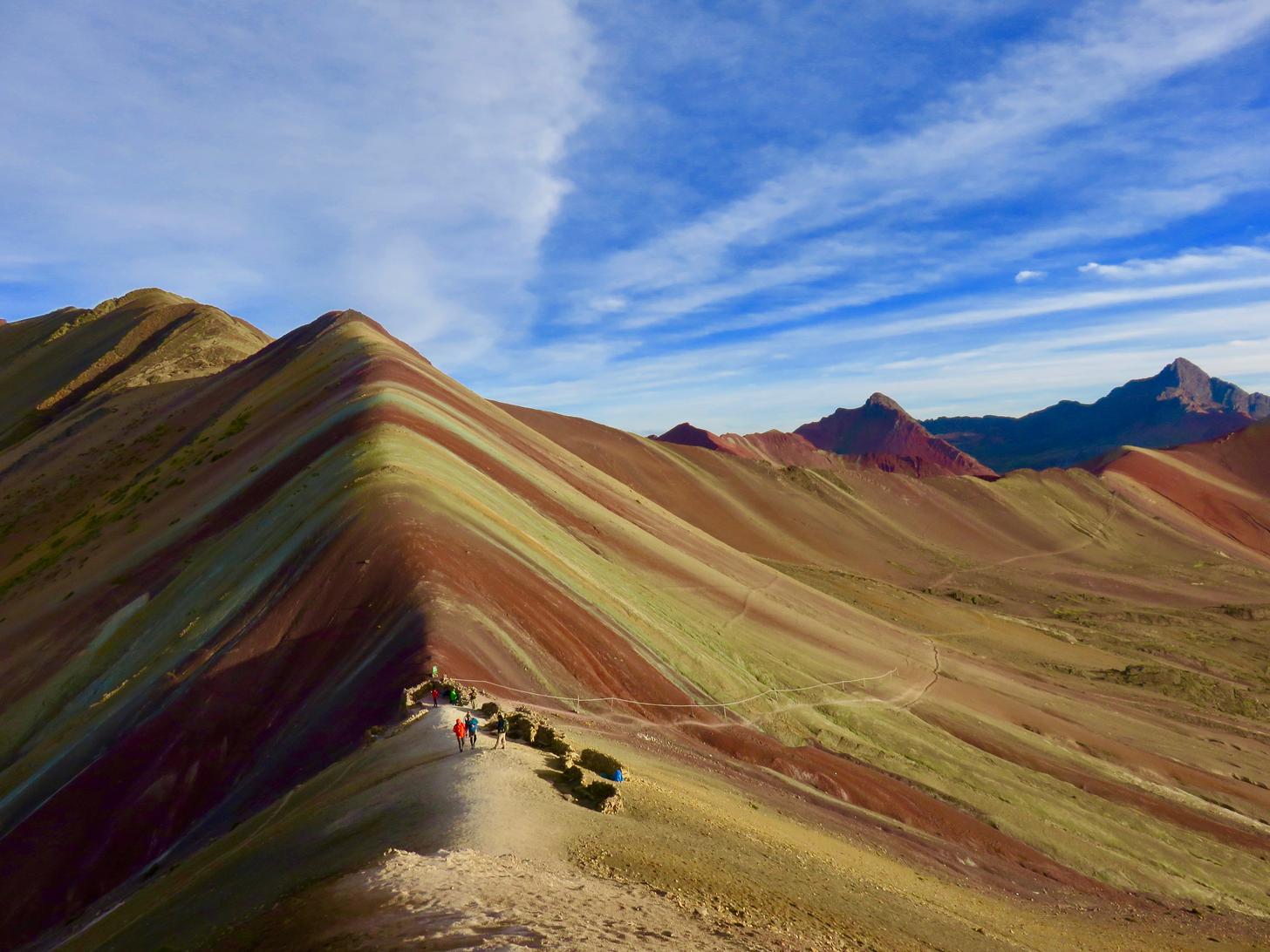
We were also treated to our first glimpse of Ausangate, its glaciated peak towering over the red and green hills. Frigid winds and thin air — Vinicunca sits just above 17,000 feet — quickly forced us back down, but we were lucky enough to have a full moon on the return hike. Not bad for our first day in the Andes.
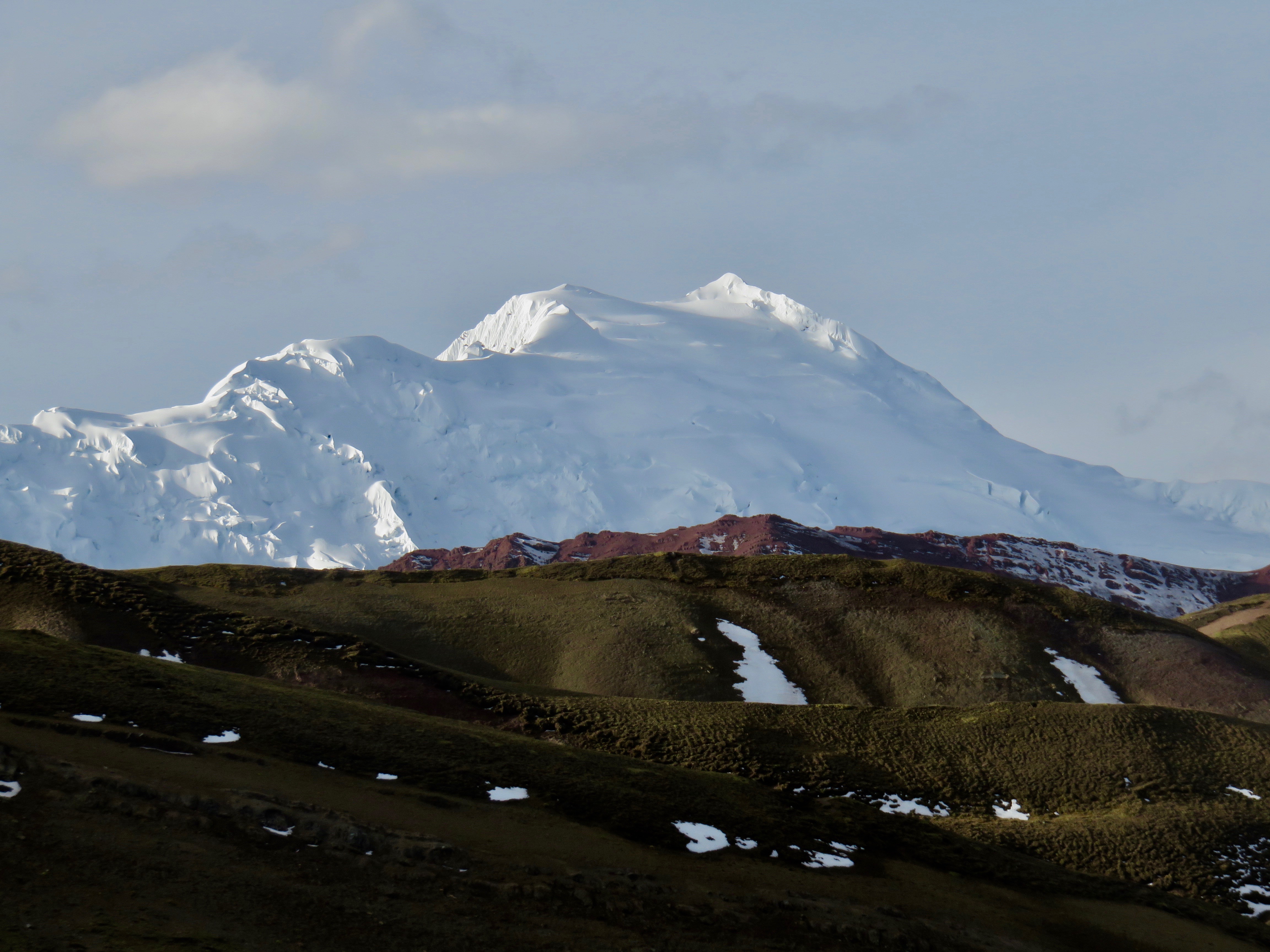
Day 2: The Valley of Alpaca
As hard as hiking in high altitude is, sleeping in it might be worse — especially when the air is so cold your water freezes outside your tent. Despite wearing a down jacket, fleece, thermal underwear, gloves and hat, I felt like a frozen popsicle in my -15 degree sleeping bag. I’ve never been so ready for a 6am wake up call. After a hearty breakfast of oatmeal and tea, we set out across a picturesque valley, filled with semi-domesticated alpaca.
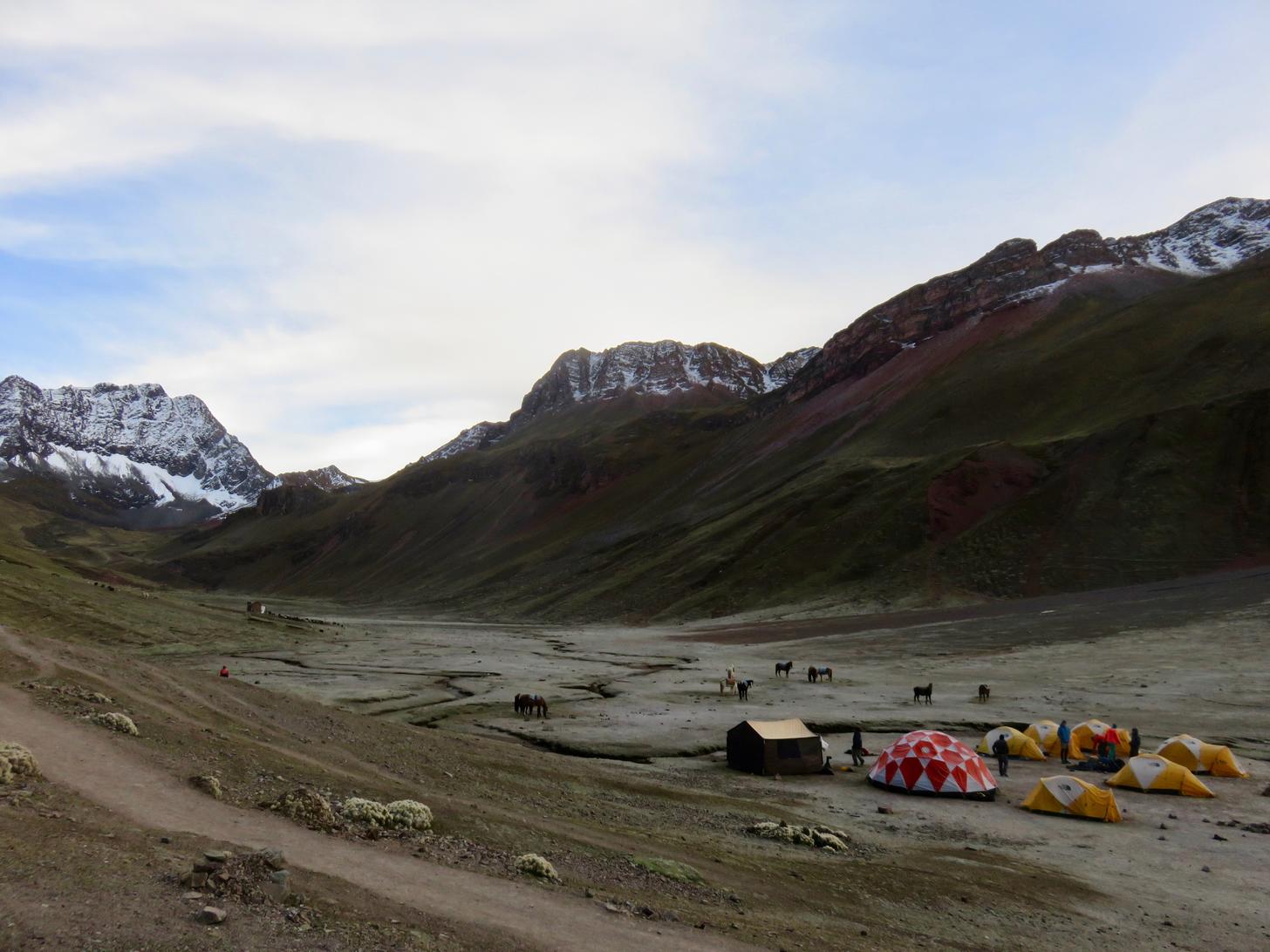
Our goal for the morning was 16,355 ft. Warmisaya Pass. The trail was steep but non-technical and after a few hours of hiking and panting, we eventually crested the pass. Immediately, we were treated to more views of the Ausangate massif. We would view Ausangate from numerous angles throughout the trip, each with its own jaw-dropping beauty and character.
As dramatic as the views were, the effects of the cold and altitude were worse, so we descended quickly into another valley. In the time we summited the pass, the muleteers had cleaned up breakfast, packed up camp and guided the mules up and over the pass so that lunch would be ready after our descent. I have tremendous respect for those super humans.
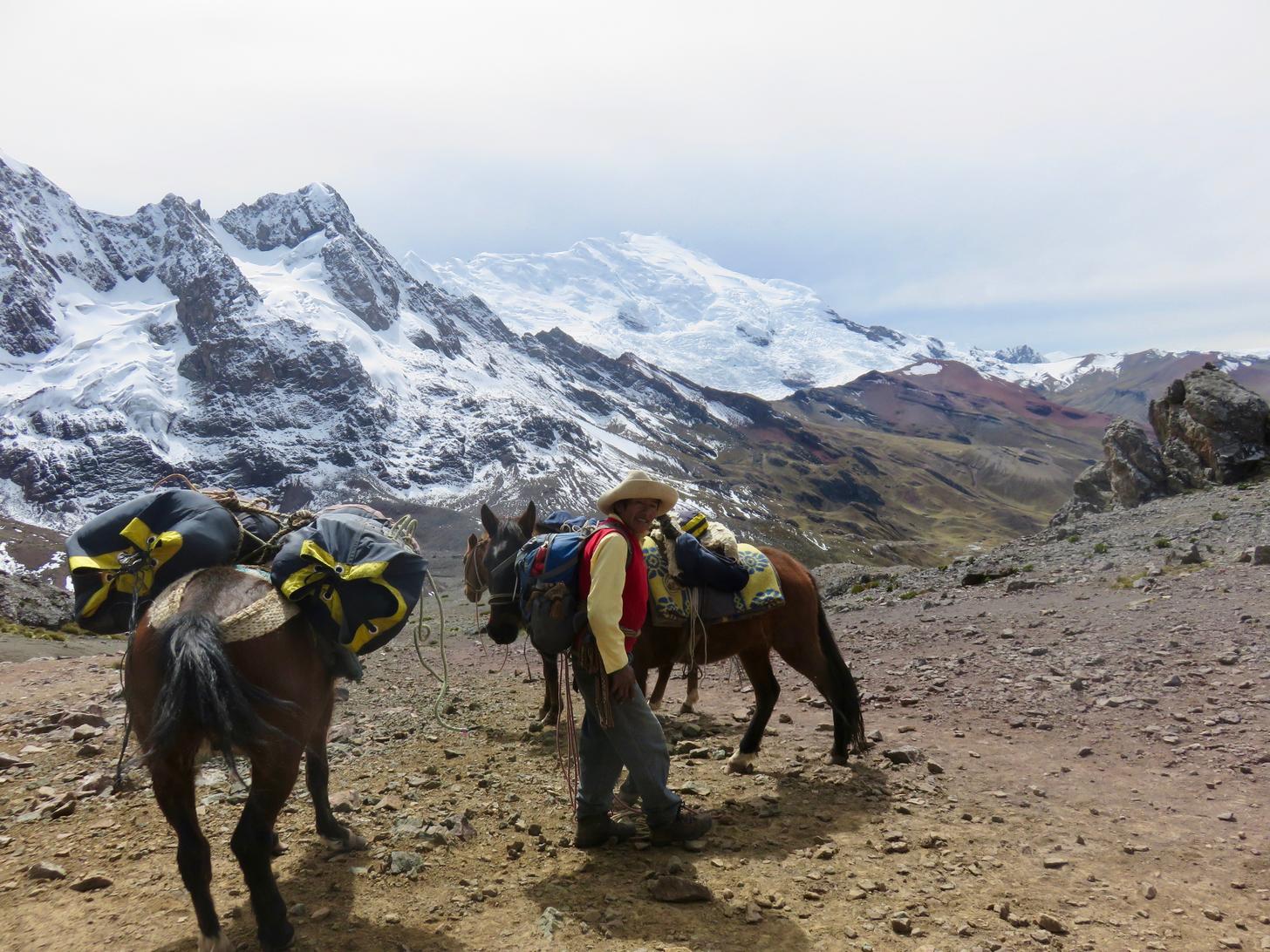
With the afternoon sun blaring down at lunch, I finally felt like I had thawed from the previous night. Herbert explained that the remaining terrain for the day would be “Inca-flat,” which means the the land might appear even, but you still end up hiking up and down a few hundred feet. Even along the Inca-flat portions of the trek, the terrain was always inspiring. Every corner and bend offered some type of “Wow” moment, whether it be a crossing herd of alpaca or a fresh mountain stream.
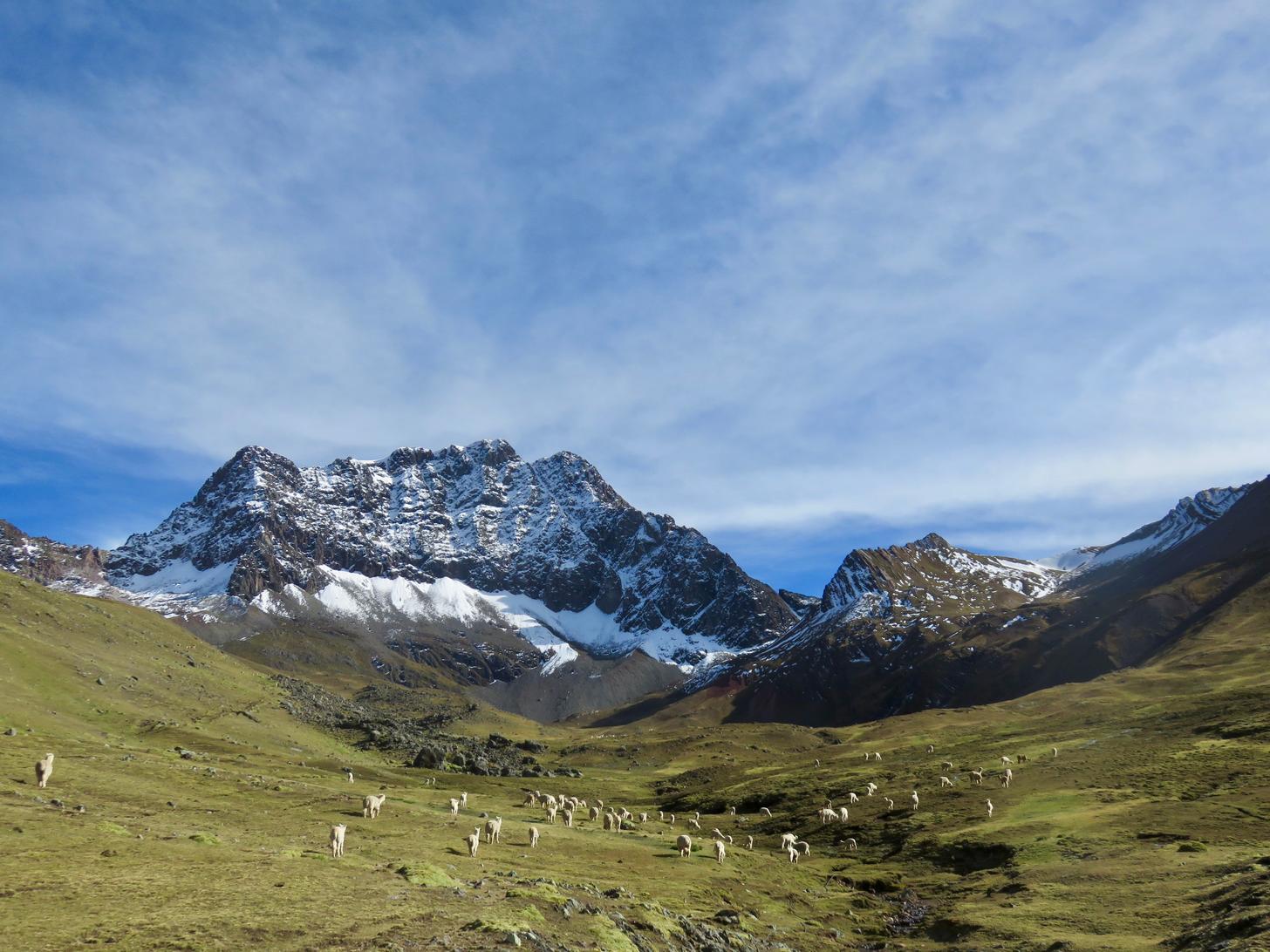
Our campsite for the night was tucked under the glaciated south face of Ausangate, which fed a nearby lake. I did get some extra excitement that night when I heard the loud rumblings of an avalanche. With the lake and boulder field separating our camp and the glacier, I figured we were in a pretty safe spot. Plus, if we were about to be buried, I’d rather be in a warm sleeping bag than outside my tent.
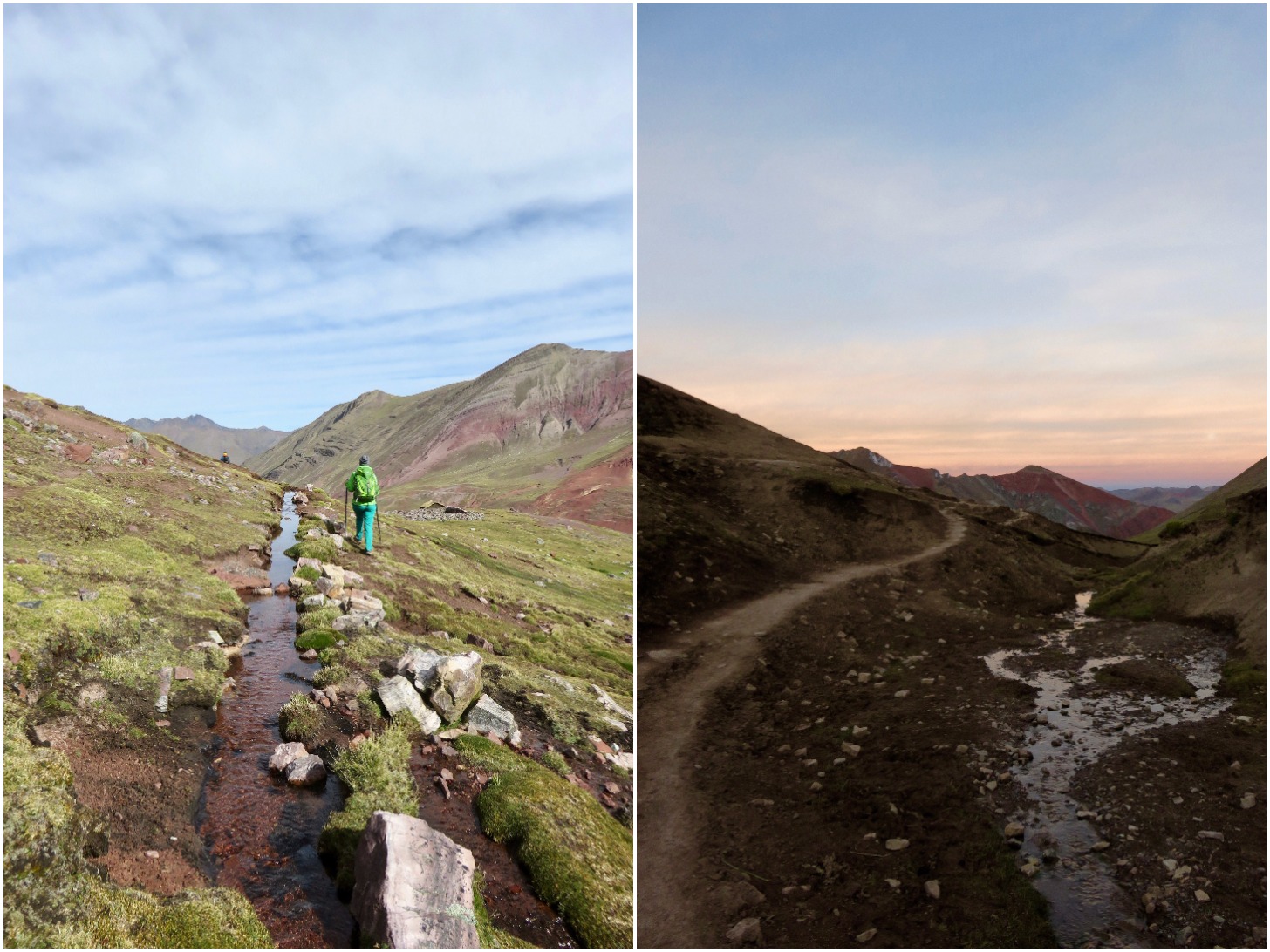
Day 3: Palomino Pass
Today, we began the longest climb of the trip: Palomino Pass. Masked in a fresh blanket of snow, Palomino looked like a daunting challenge from our campsite. At 16,731 feet, the pass would test our lungs, especially in the cold morning air. Even with the prior days at high altitude, I found myself gasping for more oxygen with every upward step.
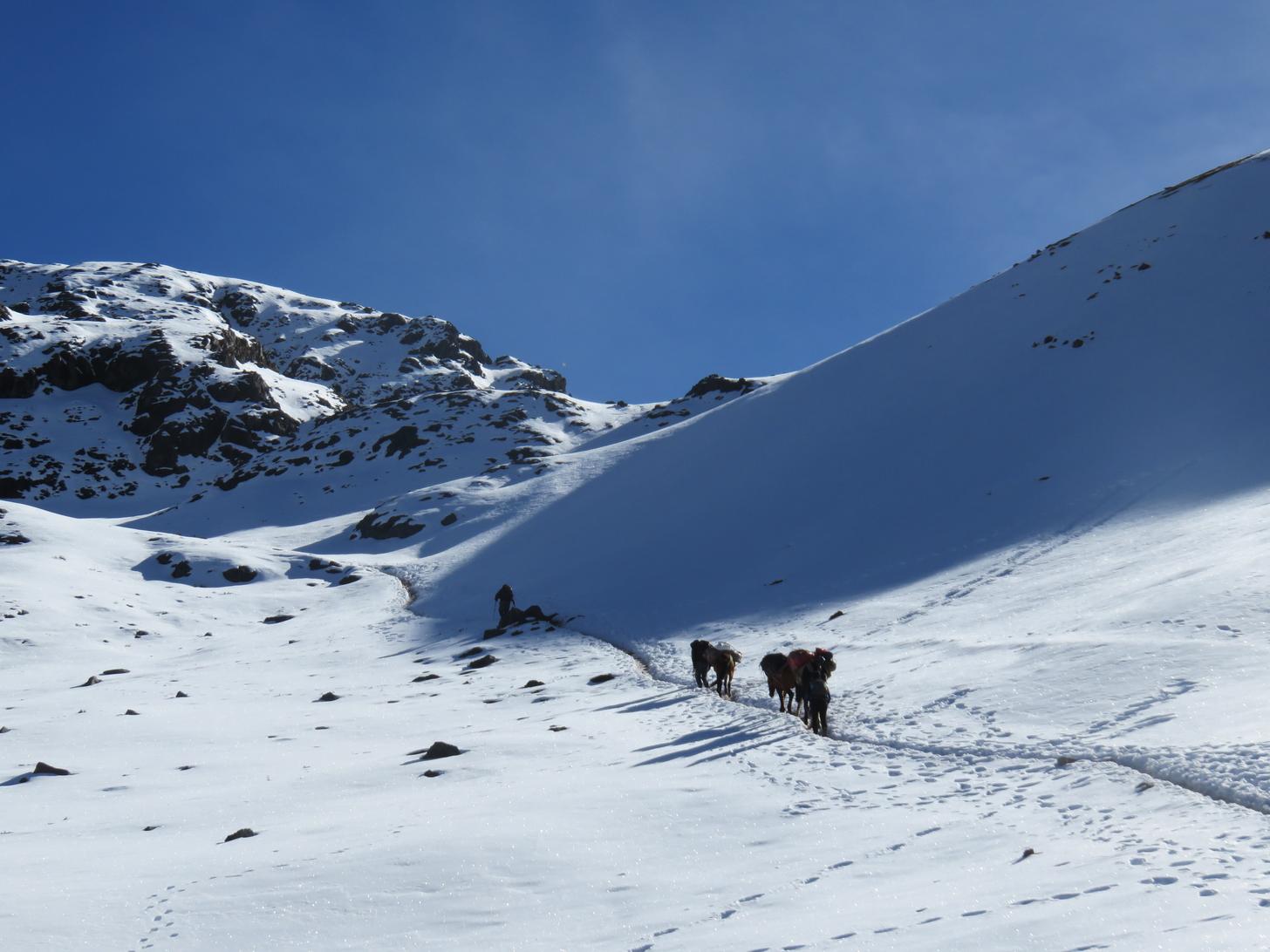
Fortunately, I had saved a Twix for this portion of the trip. Although the bar was frozen solid (I had to heat it in my pocket before I could bite into it), the chocolate provided much-needed moral support. After roughly three hours of climbing — trudging through soggy grass, mud and snow — I found myself at the top, confronted with one of the best views of the trip.
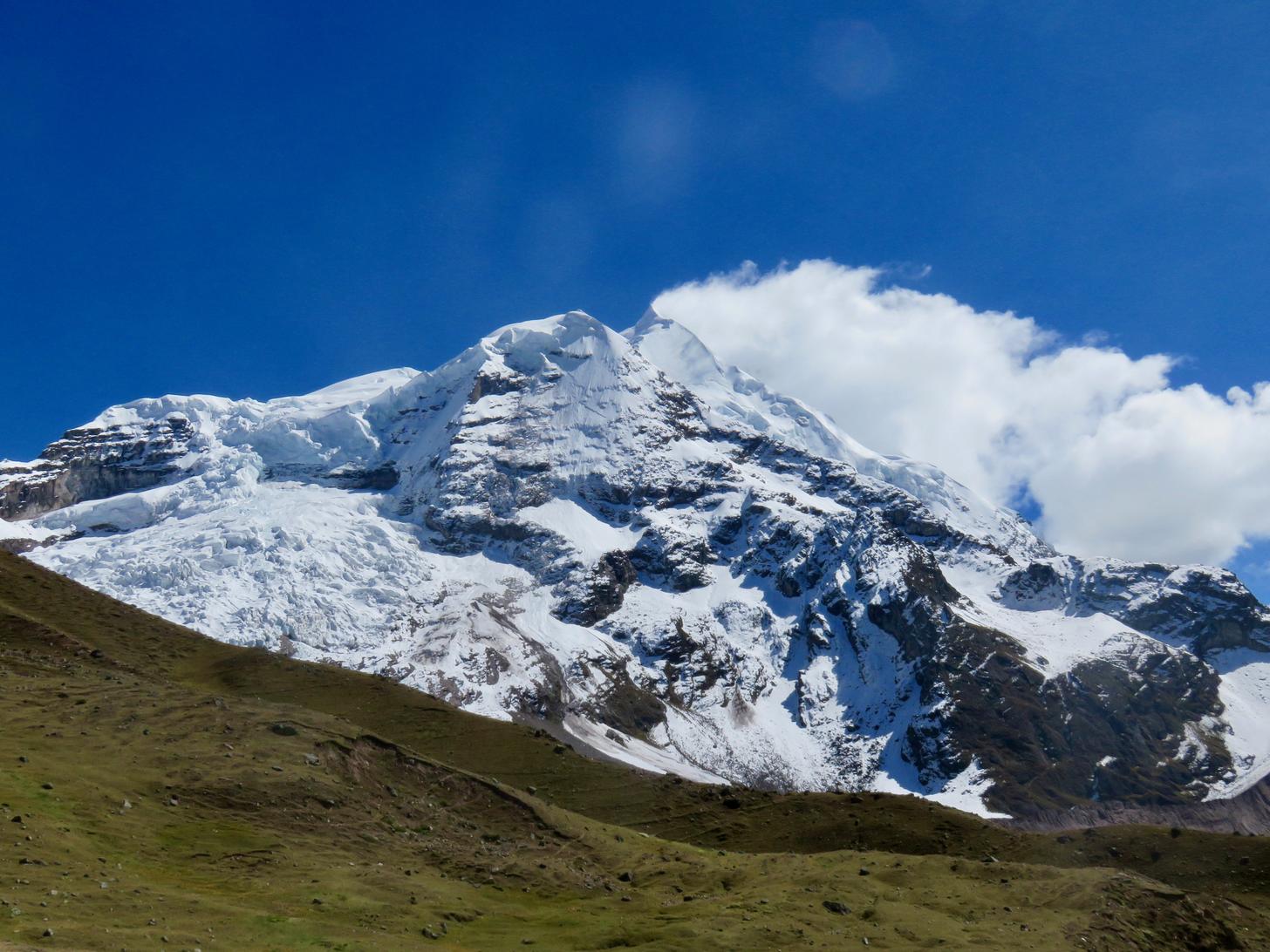
For the first time on the trip, I could see Ausangate’s true summit. The sheer magnitude of the mountain was overwhelming. This is a peak that makes its own weather. A trail of clouds emanated from the summit, formed by the mountain’s windswept snow.
After a steep descent, the rest of the day was spent hiking across Inca flats and up into a new valley. Here we were treated to views of the Three Peaks, which formed a striking backdrop to our campsite. This was our highest campground — somewhere around 16,000 feet — and our coldest. I slept with a bottle of boiling water in my jacket, but the chill was still hard to overcome.
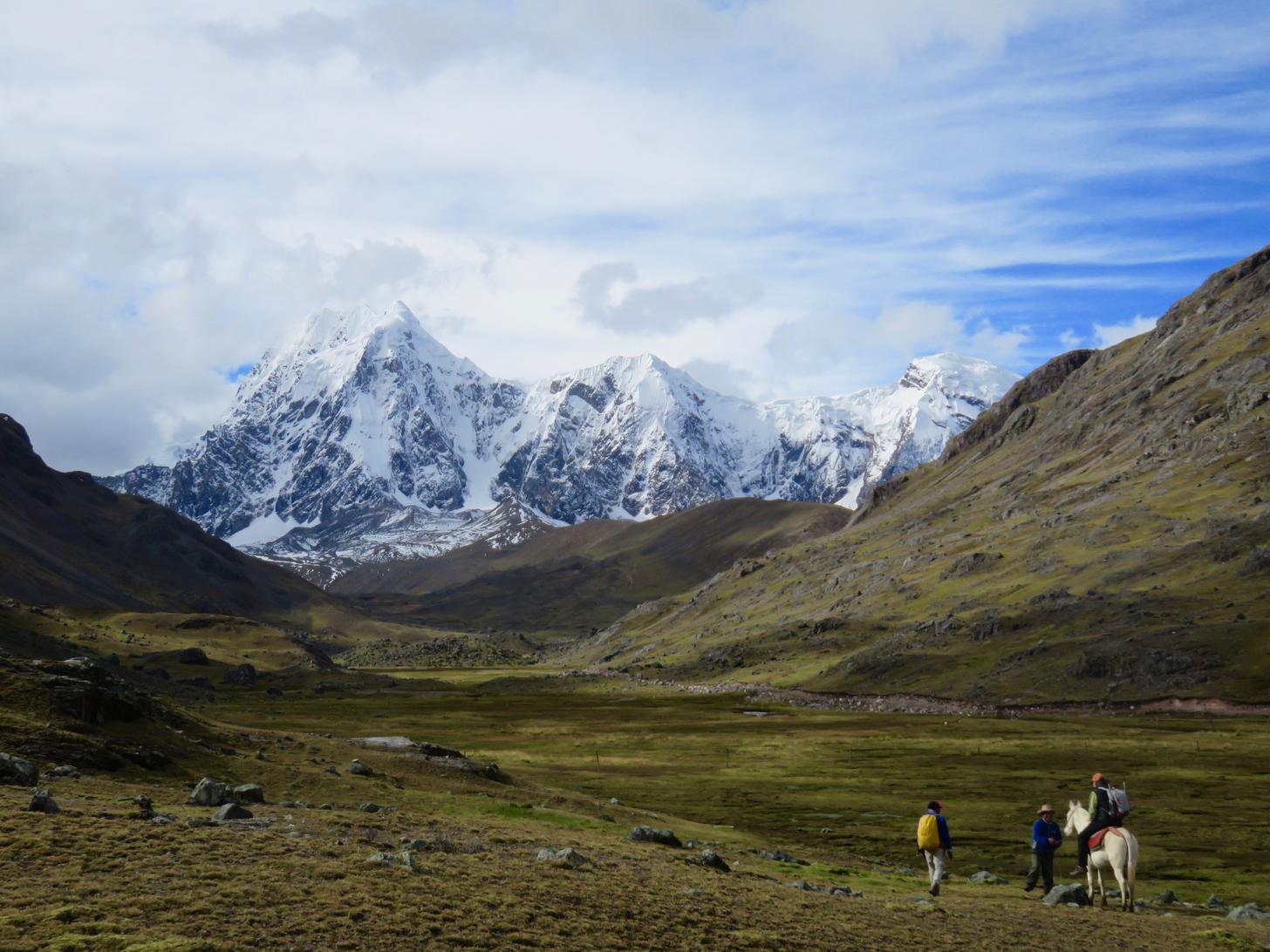
Day 4: Lakes, Hots Springs and Civilization
Frost covered everything when I woke up, from the tent zippers to the kitchen gear. I felt like I was exiting an igloo when I left my tent. That morning we began a gradual ascent to the final pass of the trip, hiking across crunchy grass and frozen marsh lands.
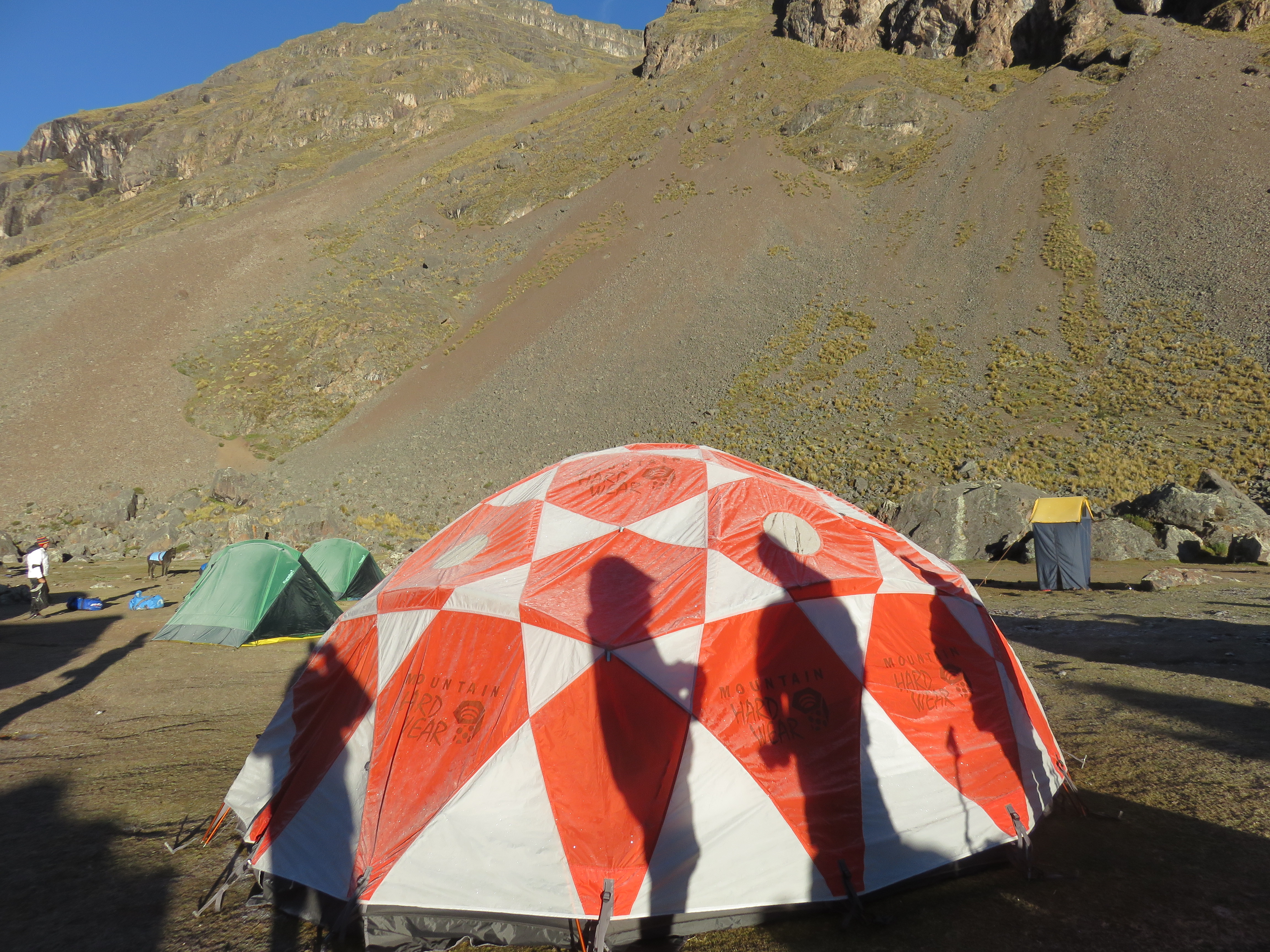
The trail took us up close to Ausangate once again, offering new views of the mountain’s glaciers and peaks. It was bittersweet upon reaching the top. My legs were thrilled to be done with climbing, but that also meant we’d soon be leaving this mountain wonderland. From here we’d have a long downhill to the village of Pacchanta and eventually Tinki, our pick up location on the final day.
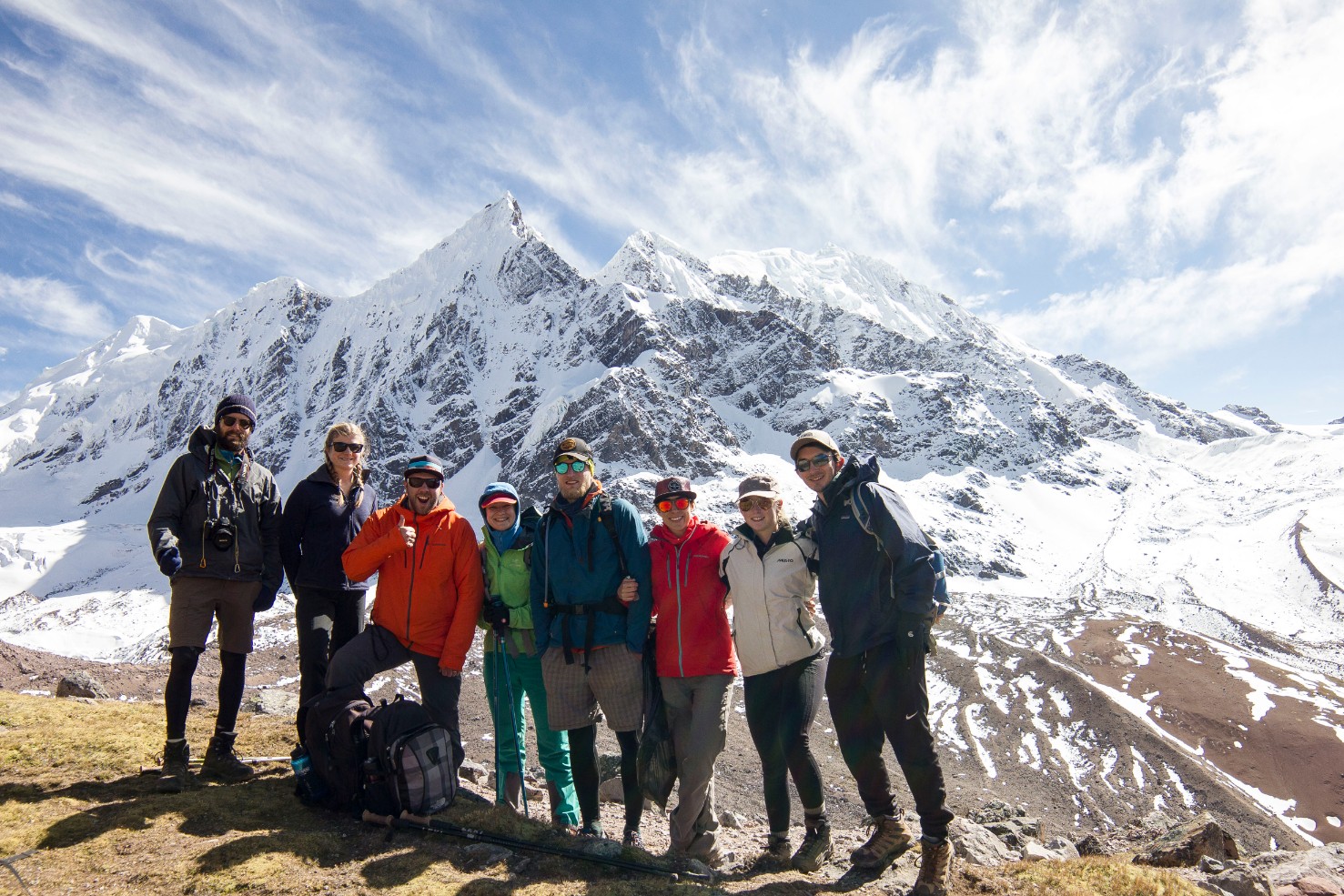
Fortunately, our guide took us on an unofficial route to Pacchanta, one that sees less traffic and more lakes. We spent the day on rolling terrain, hiking along turquoise mountain tarns and weaving between giant boulder fields. When we finally arrived in Pacchanta it was clear we were back in civilization. The road here was overflowing with trash, and vendors were lining up to sell alpaca wool goods. On the bright side, we could buy beer and chocolate. Later that night, a few of us went to the local hot springs to soak our tired limbs. From the springs, we could see the the sheer face of Ausangate, dimly lit by the moonlight.
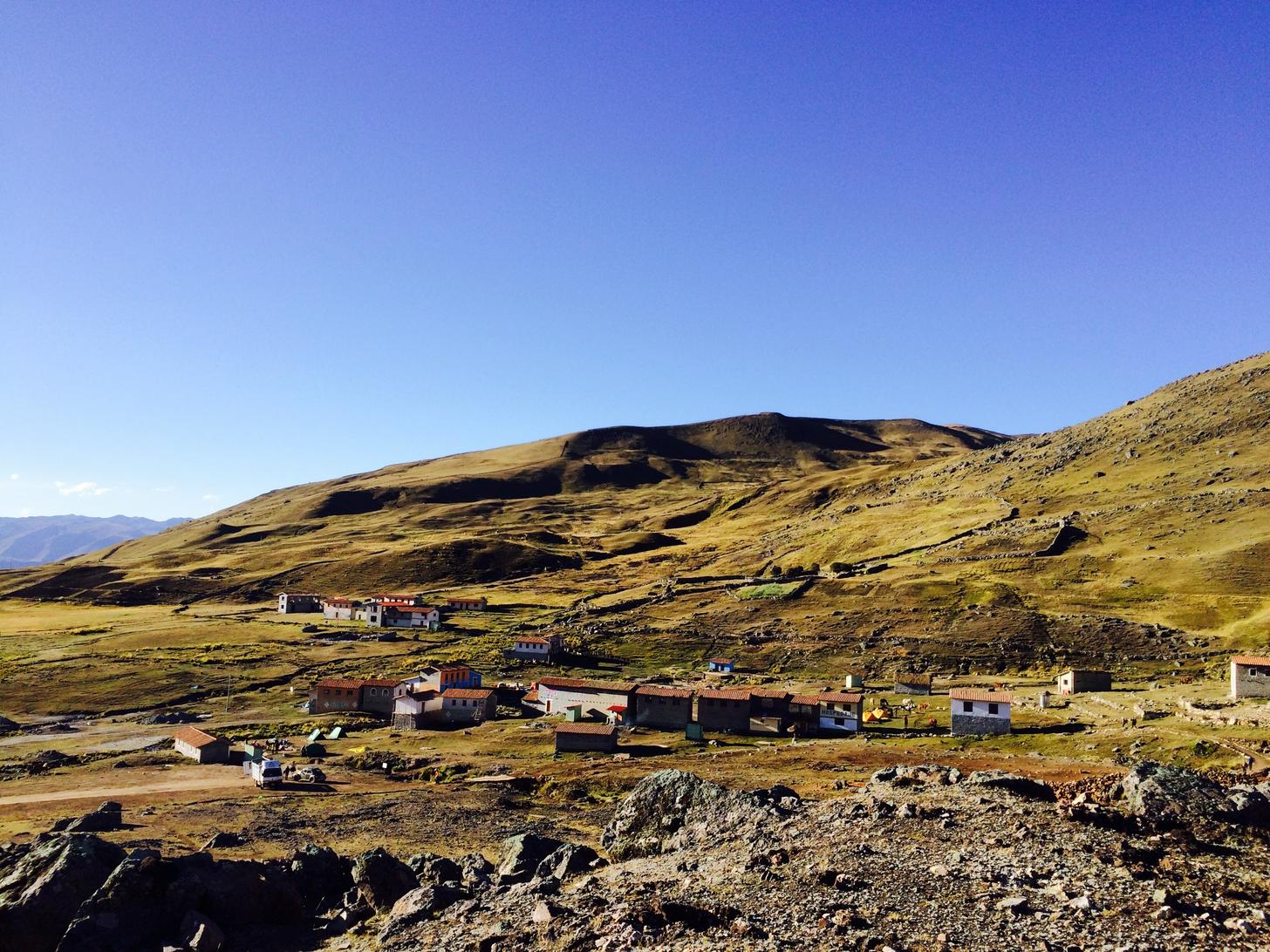
Day 5: The Road to Tinki
We left Pacchanta early, all of us eager for hot showers and food back in Cusco. Along the road, we passed numerous small villages. The further away from the mountains we got, the larger and more densely packed the houses became. Alpaca herds were replaced by cattle. Power lines criss-crossed the road. By midmorning, we had arrived just outside the town of Tinki, where a van was waiting to shuttle us back to Cusco. Although I was ready for the comforts of a big city, I couldn’t help but feel sad that this amazing journey was coming to end.
Thank you to the amazing group of people on the trek and to Apus Peru for an incredible experience!
